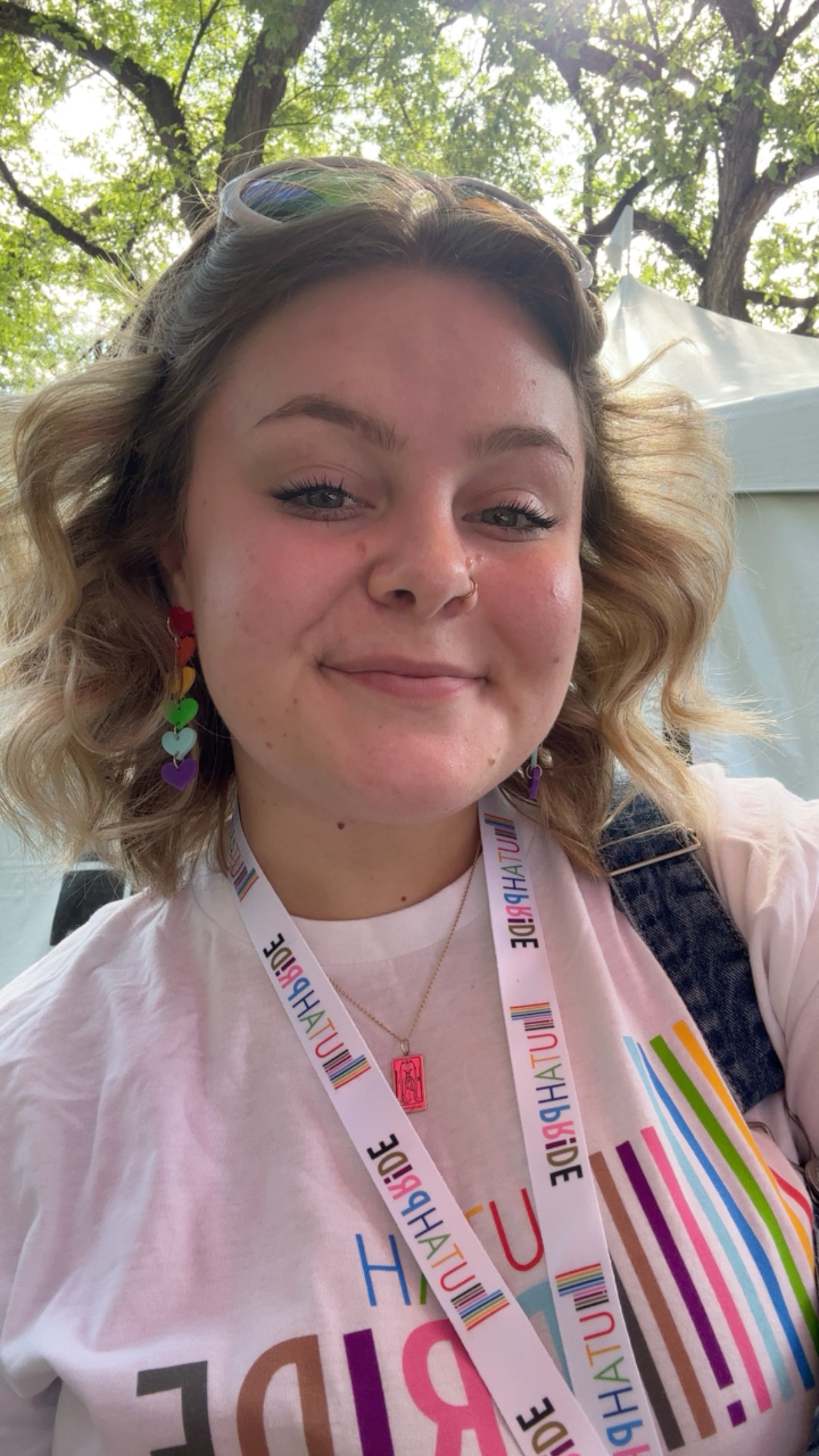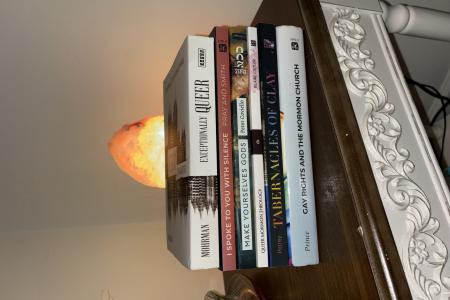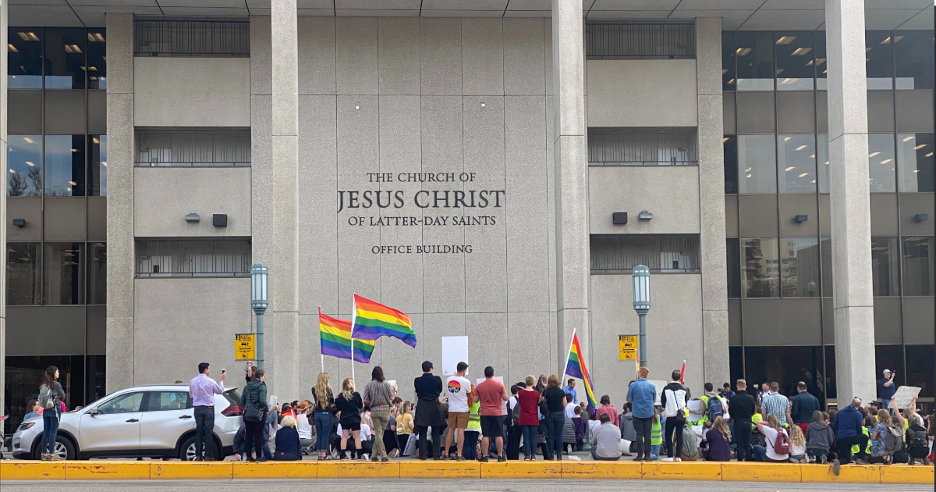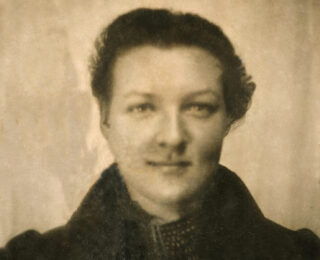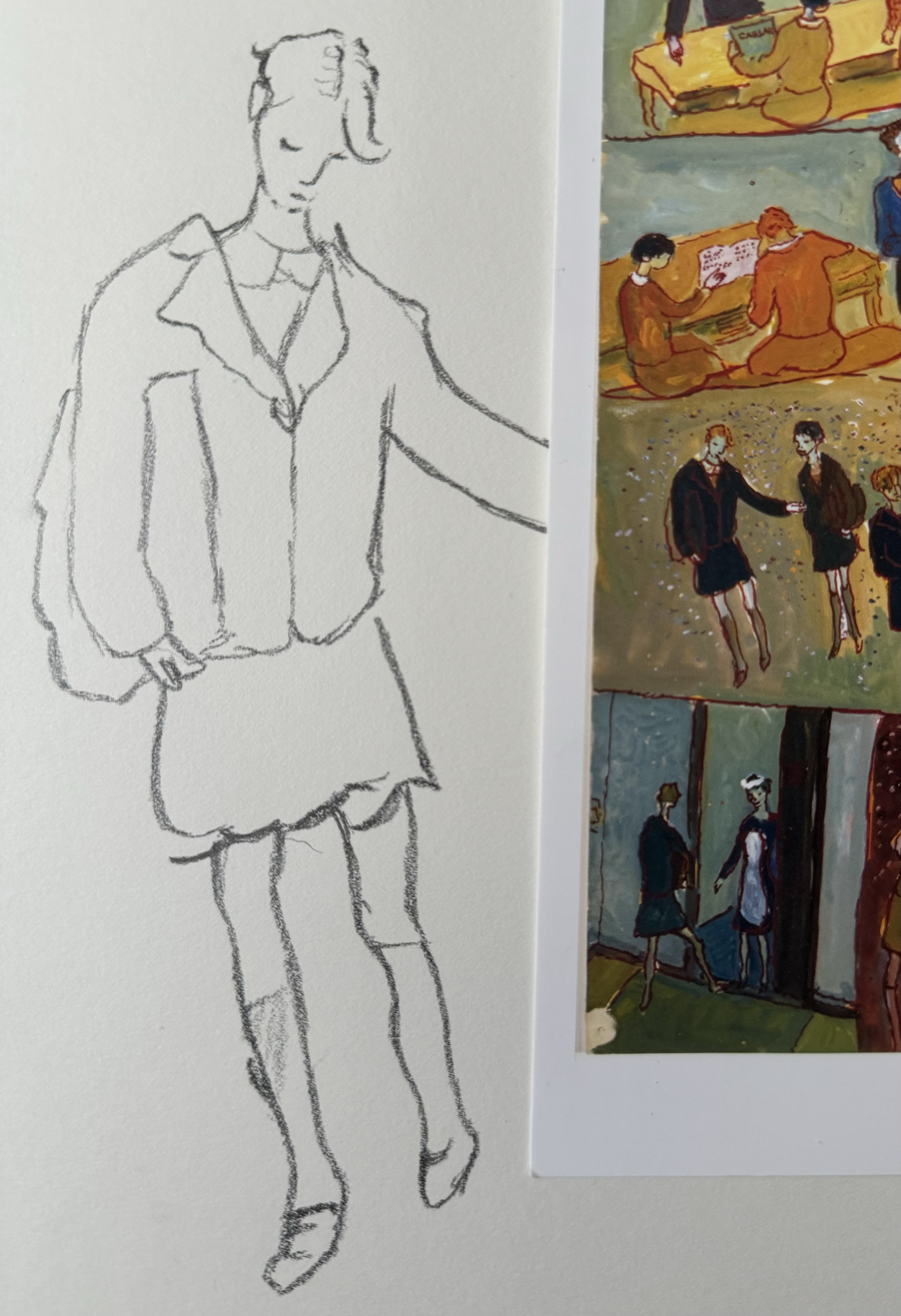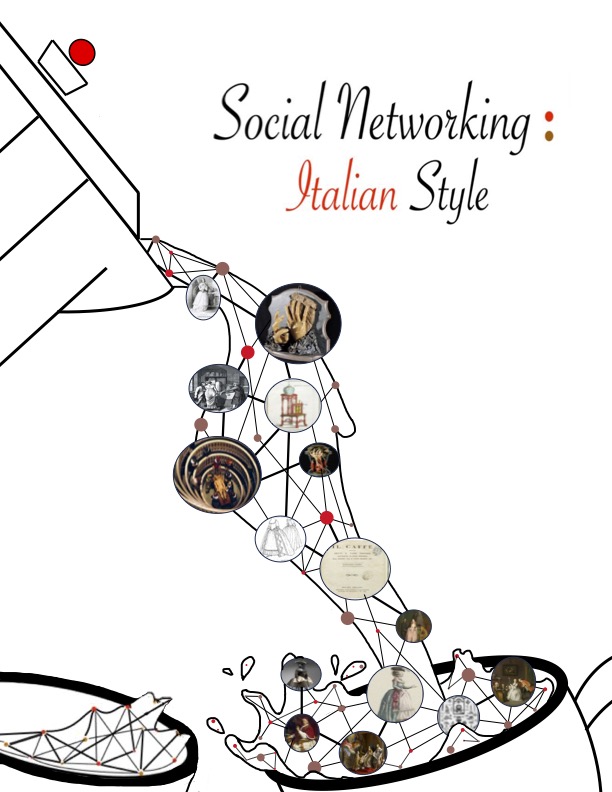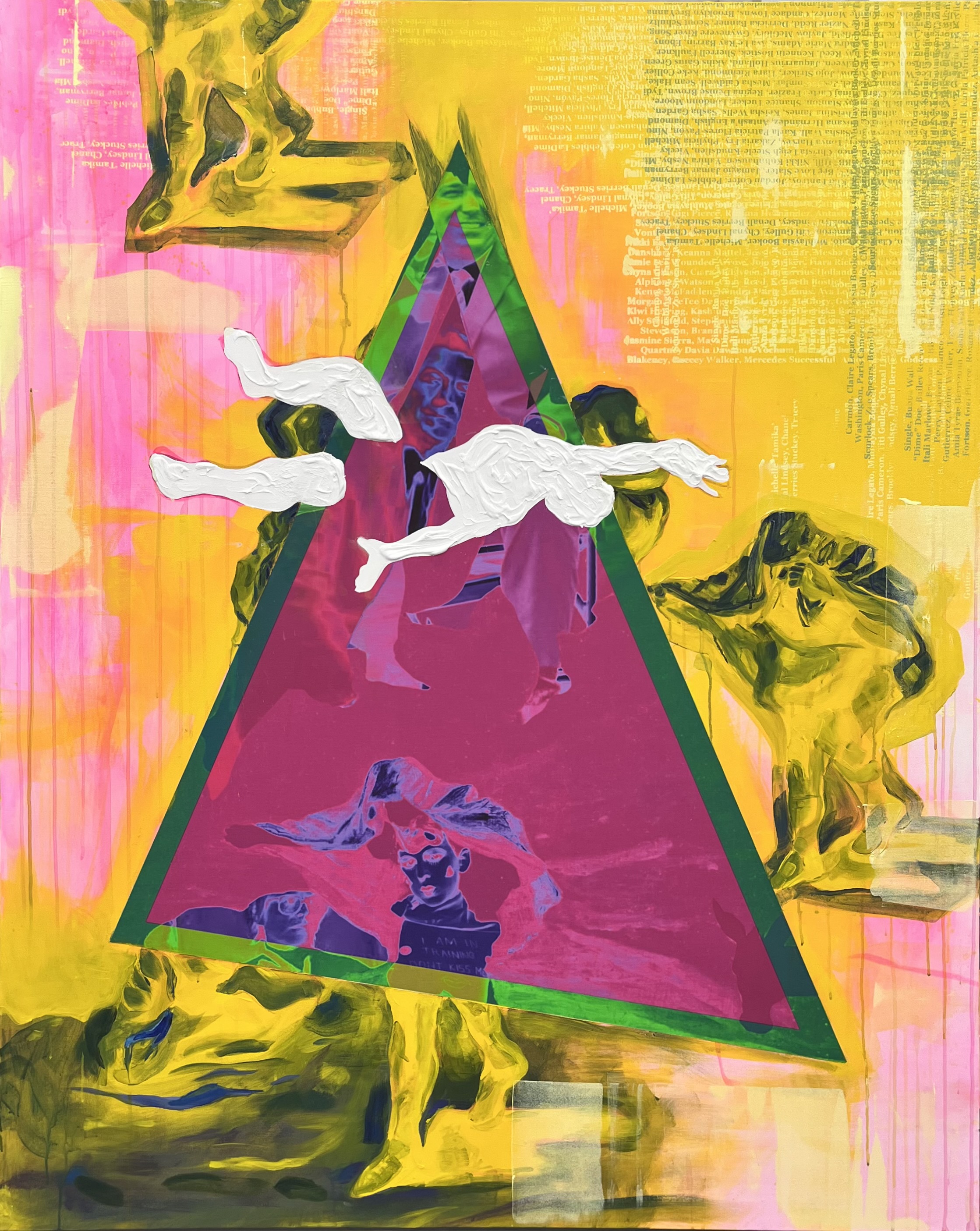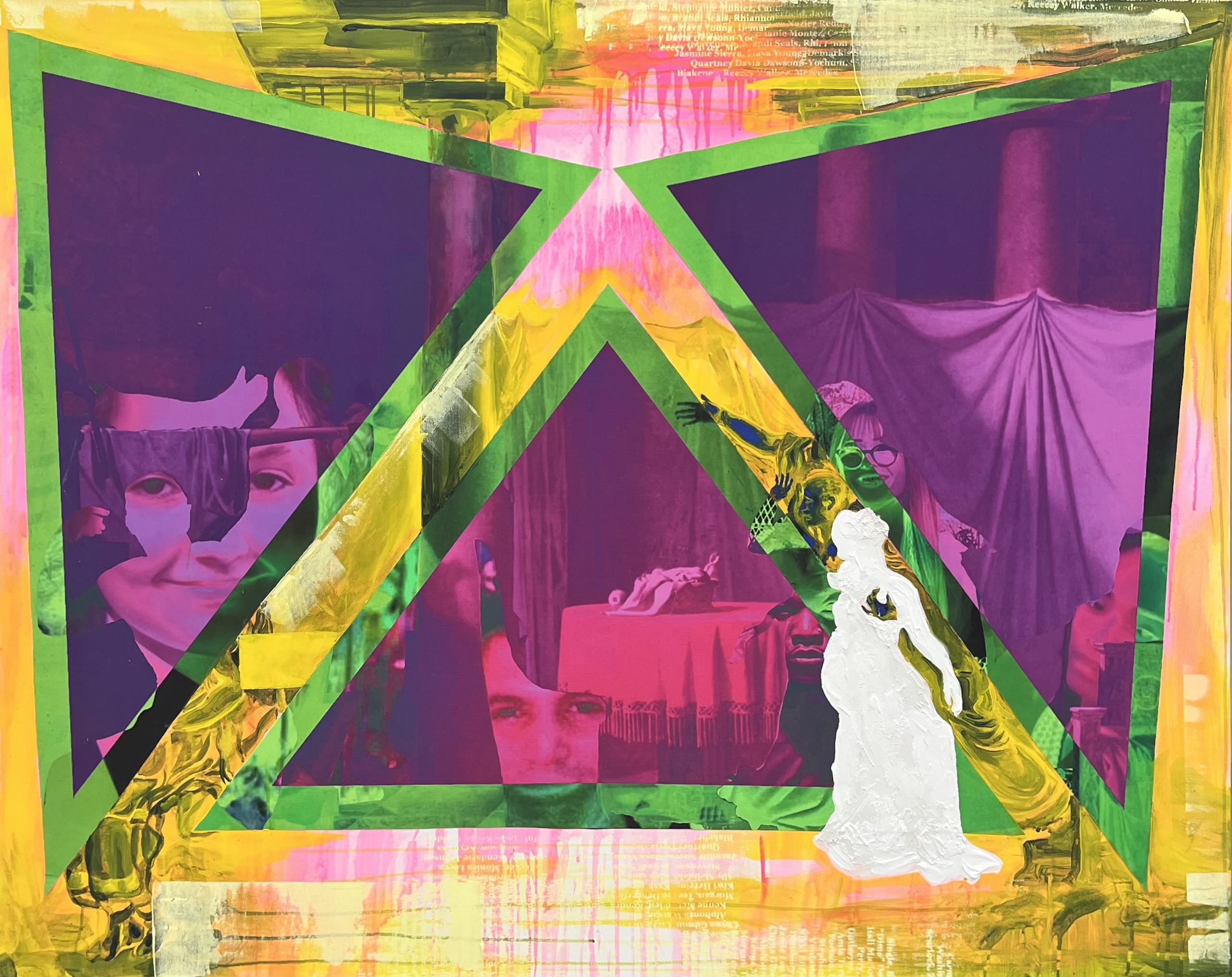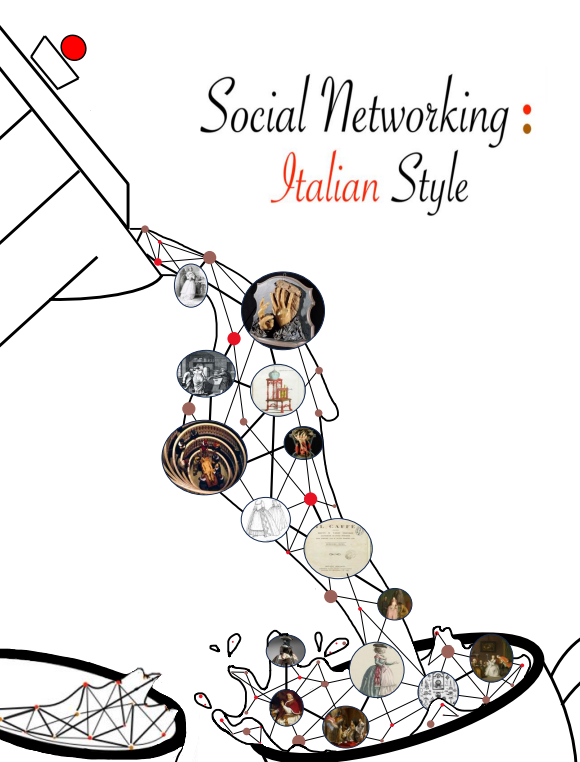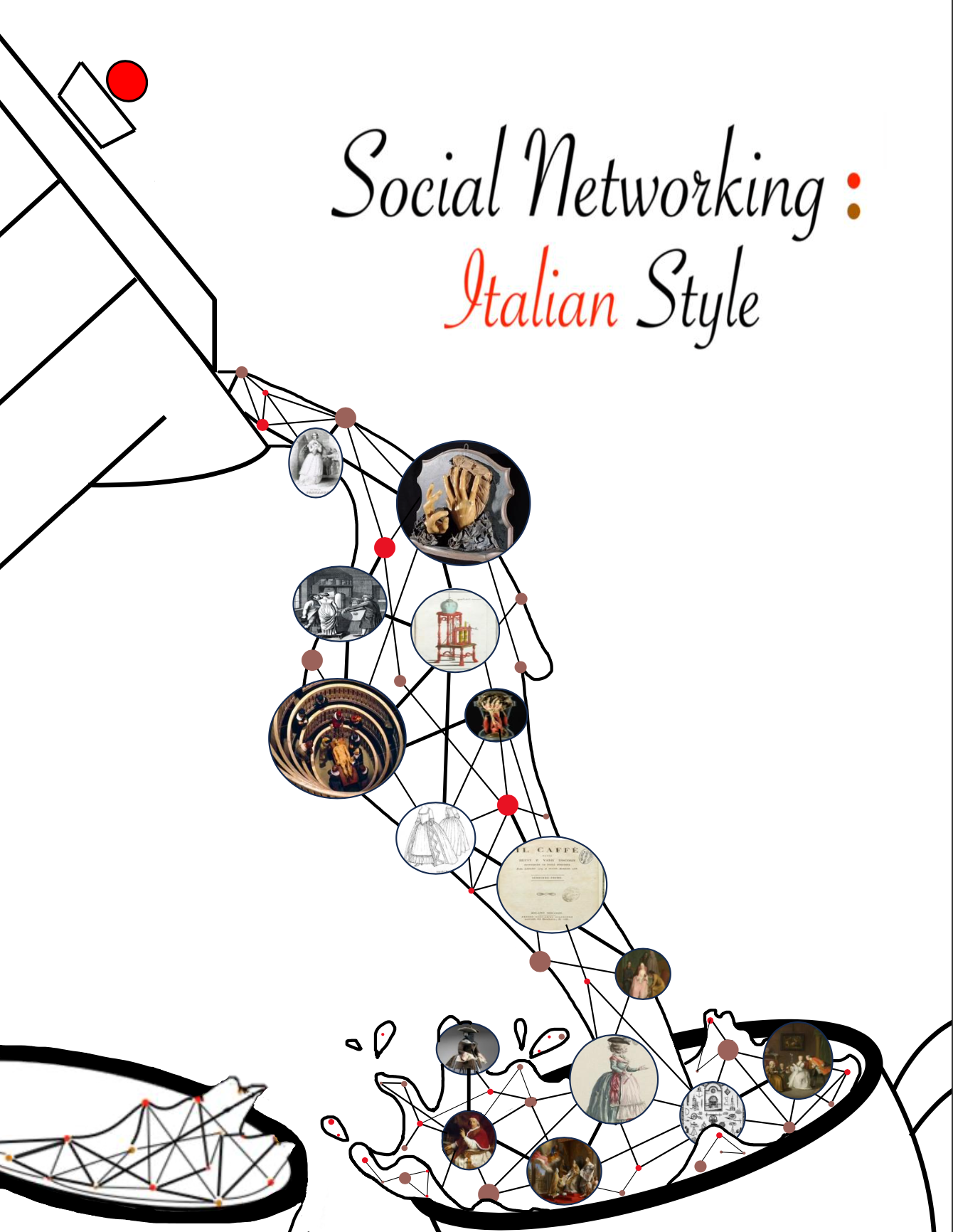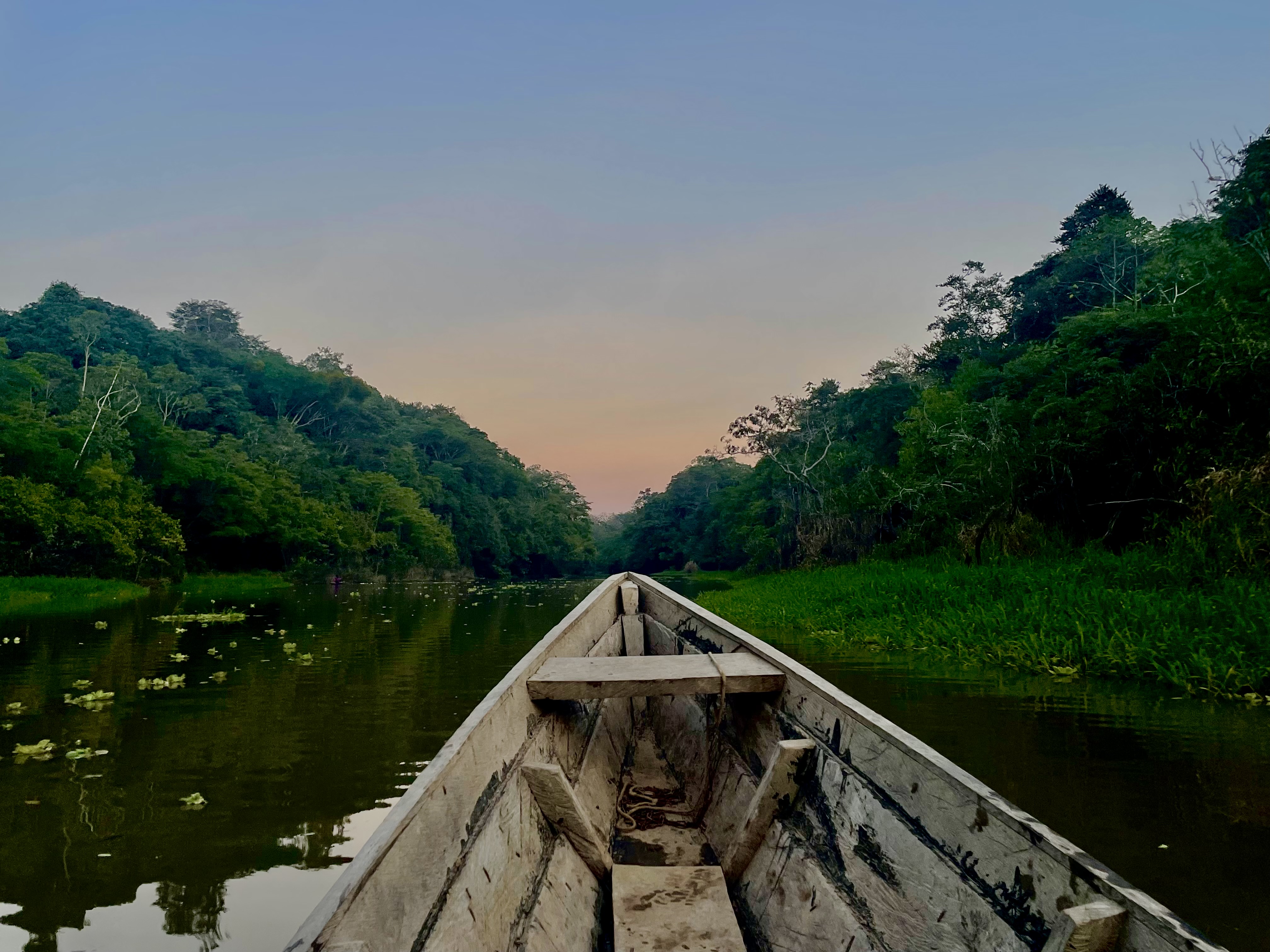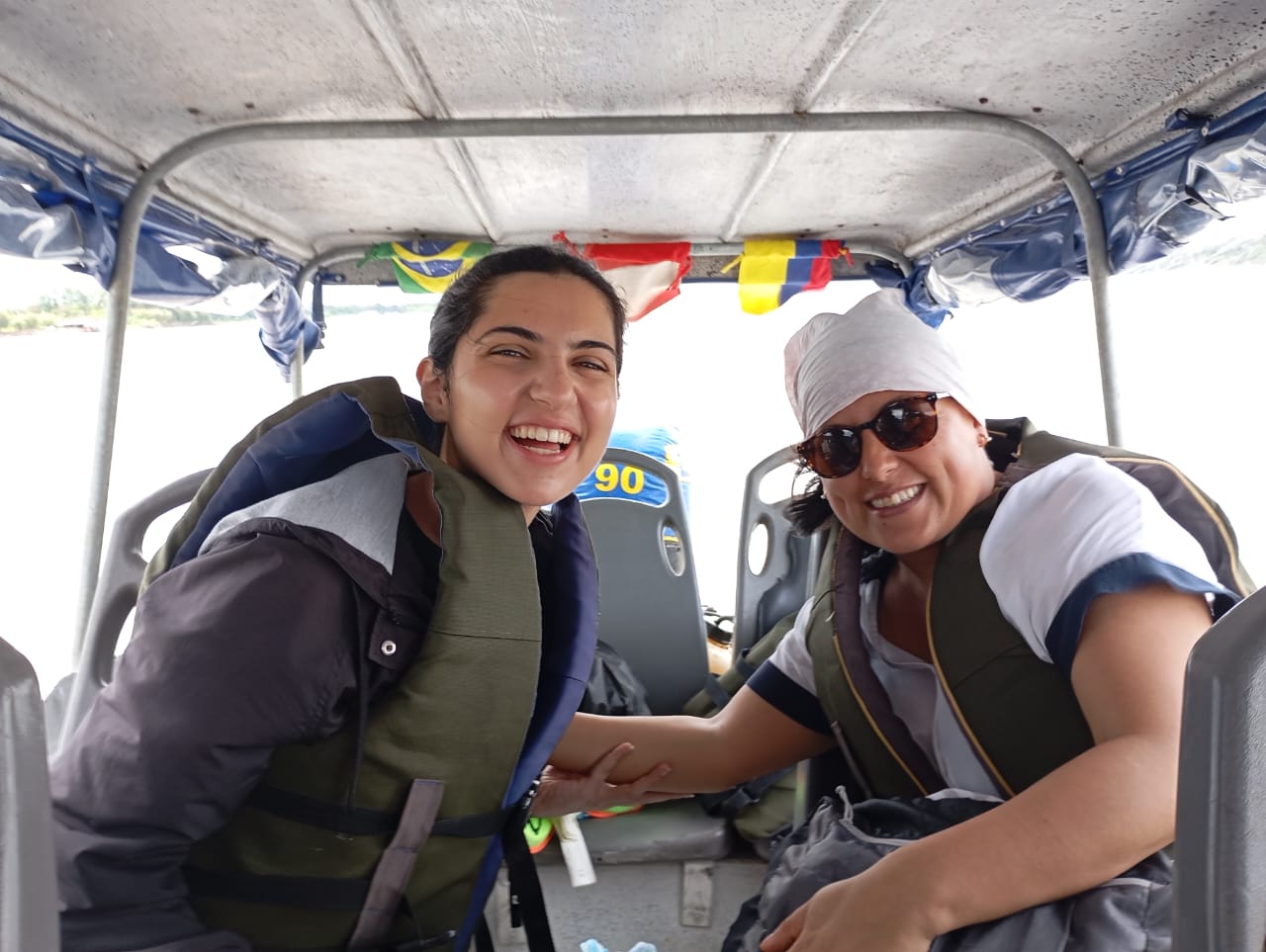President's Showcase
Maiya Johnson She/her
Supervising Professor: Dr. Joseph Hellweg
Maiya Johnson is a third-year student with a double major in Religion and English (Editing, Writing & Media). In addition to her IDEA Grant research, which has funded her honors in the major project, she is the president of Students Organized for Religious and Cultural Exploration (SORCE), FSU’s “religion club.” She has also worked with LGBTQ+ organizations, like Flourish Therapy and the Utah Pride Center, to advocate for queer rights in LDS spaces. Maiya enjoys researching the complexities of queerness in religious environments, especially pertaining to queer individuals of marginalized genders. After she graduates in the spring of 2025, she anticipates attending graduate school to obtain her Ph.D. in American Religious History with a concentration in Mormon and Queer Studies. In the future, she hopes to become a professor of Religion and Gender and Sexuality and continue her research on queerness in religious spaces.
Abstract
The Church of Jesus Christ of Latter-Day Saints (LDSC or Mormons) deems homosexuality morally transgressive and socially unacceptable. Mormon theology is grounded in gendered heterocentric principles, specifically, the requirement of heterosexual marriage to achieve “eternal exaltation.” The Church typically centers its concerns with homosexuality on men, relegating queer LDS women and individuals assigned female at birth (AFAB) to a presumed state of compulsory heterosexuality and normative femininity. Therefore, queer LDS women are forced further into the margins, leaving them mostly overlooked and unheard. I aim to give queer LDS women a platform to vocalize how their experiences demonstrate the marginalization of female queerness in Mormonism.
This study documents the lived religious experiences of queer LDS women and AFAB persons in Utah. It examines how such individuals orient themselves and their sexual identities within a religious culture that rejects them. My study also explores how queer LDS women categorize themselves in relation to the LDSC and how they respond and cope with their Mormon identity and experiences based on their self-categorization.
I conducted open-ended, semi-structured, focused life-history interviews with queer LDS women and AFAB persons over six weeks this past summer. These interviews enabled participants to reflect on their religious experiences and explain how anti-queer LDS theology and doctrine have directly impacted their lives and self-perceptions. They narrated the challenges of navigating their relationship with Mormonism and how living in a dense Mormon region often negatively impacts their daily lives through culture and politics.
Presentation Materials
Project Documents and Links
Zephaniah Malka she/her
Supervising Professor: Carrie Ann Baade
Zephaniah Malka is a senior at FSU pursuing a Bachelor of Fine Arts in Studio Arts with focus areas in Painting and Moving Image. Malka's portfolio largely consists of mixed media stop-motion animation works. She has accumulated over 58,000 followers, 4 million likes, and 20 million views across platforms displaying her art and has previously been commissioned by artists under Republic Records and Darkroom Records. She has an interest in using social media as a means of connecting the public to the art world.
Abstract
Charlotte Salomon was a Jewish artist killed during the Holocaust. Before her death, she was able to ensure the safe-keeping of her magnum opus: her semi-fictional autobiography, Life? Or Theatre?. The work consists of nearly 800 gouache paintings with accompanying writings and songs, telling her life story during the rise of Nazi Germany. This project aims to counter growing antisemitic rhetoric and Holocaust denialism by highlighting a Jewish artist who experienced the reality of the Holocaust and whose seminal work tracks, in real-time, the rise of Nazism in 1930s Germany. By summarizing her semi-autobiographical work in sections and putting it on public platforms I hope to increase its accessibility. I hope to also counter the growing apathy, denial, and detachment that is exhibited towards violent events and their victims by displaying a personal account of this atrocity. I hope to reach a wider audience and popularize Salomon’s story by creating easily consumable stop-motion videos, disrupting the constant influx of disinformation and desensitization at the source of its algorithmic origin.
Presentation Materials
Project Documents and Links
Colson Gantt she/her
Supervising Professor: Dr. Irene Zanini-Cordi
Colson Gantt is a junior from Tampa, Florida, double majoring in International Affairs and French. After graduation, Colson plans to attend law school to pursue international law. She has always known she wanted to earn a degree in the social sciences because of her interest in politics and cultures. Colson studied abroad in Paris in summer of 2023 with FSU International Programs. During the 2023-2024 academic year, she worked as a research assistant for Professor Zanini-Cordi as part of the UROP program where she became interested in social network theory and 18th century sociability. Colson and her UROP team co-authored a pedagogical peer-reviewed article that will appear in the spring 2025 edition of the journal of Eighteenth-Century-Studies. With her team, Colson won an IDEA Grant to produce a podcast series on 18th-century Italian culture during summer 2024, an experience that helped hone invaluable research skills.
Abstract
A grand tour into the intricate networks of 18th-century sociability reveals the social connections that shaped the modern intellectual and cultural fabric of European society.
This IDEA Grant project continues our UROP research and podcast experience, which focused on how Italian Salonnières contributed to the Enlightenment. By developing the podcast series Sip and Connect: Social Networking Italian Style, we examine cultural components that shaped Italian Sociability during the eighteenth century and consider how they embodied Enlightenment Ideas. Our episodes explore the origins and growth of these innovative technological and cultural developments facilitated by social connections. We discuss topics like coffee culture, journalism, politics, early science, religion, fashion, social etiquette, art, and opera.
We researched these themes, interviewed experts, and drafted and edited scripts, culminating in our production of twelve podcasts over the summer. This series will be an integral part of an undergraduate course on 18th-century Italian Enlightenment and Sociability. In addition to our primary goal of helping students explore Enlightenment culture, we learned how to engage a broad public in intellectual topics in a conversational way and to utilize modern media to disseminate knowledge.
By considering the efforts of women artists, writers, and scientists in our podcasts, our contribution aims at reshaping the androcentric conversation on Italy's cultural and scientific development during the Enlightenment. Through the revision of our peer-reviewed Eighteenth-Century Studies article "Conversations That Shape Identity," we reflected on how these goals and outcomes related to the overall meaning of our pedagogical experience, concluding with the IDEA Grant.
Presentation Materials
Project Documents and Links
Arantza Caudillo Alvarez she/her
Supervising Professor: Joseph Hellweg and Christina Owens
As a third-year senior double-majoring in International Affairs and Human Rights, I have focused my academic journey on indigeneity, migration, and women’s rights in the Global South. My experience as a Mexican immigrant drives my commitment to advocating for the immigrant and refugee community through both professional roles and service work.
I am an Honors in the Major student, a Social Science Scholar, an HSF Scholar, and an Honors Legal Scholar. My internships with the International Rescue Committee and the Center for the Advancement of Human Rights have involved refugee resettlement and assisting with immigration applications. As president of 'After They Arrive,' I’ve led projects and events to support refugee and immigrant resettlement.
During research in Mexico, I also worked as a field instructor at PSYDEH, guiding initiatives that empower indigenous women. These experiences have deepened my dedication to amplifying marginalized voices and advocating for human rights.
Abstract
Indigenous Otomi, Tepehua, and Nahua women in the eastern mountain range of Hidalgo, Mexico, experience a reconfiguration of their roles in the private and public sphere that creates new forms of gender-based violence, including physical, financial, and verbal abuse, as a result of global socioeconomic shifts. As a response, women use their ancestral knowledge about embroidery, religious practices, and community organization to find agency and moments of freedom amidst poverty and neglect. Traditional forms of sustenance in the municipalities of Tenango de Doria, Huehuetla, San Bartolo Tutotepec, and Acaxochitlan face displacement by global economic development. Men in these communities feel compelled to migrate to urban areas within Mexico or the U.S. to keep up with the increasing living costs. Thus, women must take on a plethora of roles during their absence. The change in socioeconomic dynamics and the recontextualization of Indigenous ways of life exacerbated the challenges faced by these women. Yet, they resorted to developing intricate embroidered handicrafts that reached the national and international markets to sustain themselves and their families. This research relies on three months of participant observation, twenty-five semi-structured interviews, one focus group, and three informal interviews to explain the reconfiguring roles of Otomi, Tepehua, and Nahua women and their efforts at gaining agency through their work as artisans and religious practices.
Presentation Materials
Project Materials
Project Documents and Links
Ajay Nehaul
Supervising Professor: Dr. Amanda Driscoll
My name is Ajay Nehaul and I am a Political Science major that is also pursuing a minor in Business. I am also currently pursing the global citizenship certificate. During the spring semester I was part of the Undergraduate Research Opportunity program (UROP) where I got to assist with research centered around Thomasville, Georgia. This sparked my interest within the area and is what led me to centering my honors thesis around.
Abstract
The goal of this research is to evaluate the extent to which African Americans, residing in Thomasville Georgia, faced the brunt of the legal system and the manner in which it affected their rights as American citizens. This research will look closer at the 14th amendment (i.e. a federal law which grants American citizens the right to due process by the law and equal protection) and the manner in which it was undermined, subsequently inhibiting African Americans from enjoying the fundamental right of equality without being subjected to racist discriminatory laws. This research paper will also evaluate the racial disparities that may have also existed within the process of adjudication within the circuit court system in Thomasville.
Presentation Materials
Project Materials
Project Documents and Links
Clay Barczak They/Them
Supervising Professor: Daniel Luedtke
Clay Barczak is currently located and working in Tallahassee, Florida. Their paintings and collages investigate their lived experiences as a queer and gender-nonconforming individual in the American South. Their work synthesizes source imagery from political, historical, and vintage erotica with historical paintings to create an imposing presence in their compositions with a clear critique of a contemporary issue. Each work employs a vibrant color palette in conjunction with themes of disjointedness in order to expound upon their internal negotiations with the strict historical record of identities and the possibility of reinstating some ambiguity into the art historical canon.
Abstract
Consistent throughout Western art history predating the late 1800s there is a significant lack of queerness and representation of gender expressions outside of the binary. Within this creative research project, I have investigated this lack of representation and reconstructed historical paintings from a queer perspective to solidify queerness in the Western art historical canon. Throughout my project, I created a series of three 48” x 60” paintings that engage with the genre of history painting by referencing artists renowned as masters in their craft to align queer ideologies with that of historically significant painting practices. This work was based on a series of digital collages to root the work in a contemporary sphere while working from antiquity. This final series of paintings serve as long-standing documentation of the sequences of traumas and everyday experiences of the queer community from the 1800s onwards. Through equating queer experiences with that of a heterocentric history I am solidifying themes of equality and queerness in the Western canon from both a contemporary and historical lens.
Presentation Materials
Project Documents and Links
Jamila Guard she/her
Supervising Professor: Dr. Lisa Eckel
Jamila Guard is a fourth-year student majoring in Behavioral Neuroscience. Continuing her honor’s thesis project in Dr. Eckel’s lab, she is using a rodent model of binge-like eating to investigate a possible therapeutic target for bulimic syndromes. She hopes to expand the literature on effective pharmaceutical treatments for these syndromes through her research. Following her graduation, she plans to obtain a Ph.D. in neuroscience, focusing on addiction and the neural pathways underlying motivated behavior.
Abstract
Semaglutide (SEMA; marketed as Ozempic®) has been shown to decrease palatable food intake, leading to weight loss, in individuals with obesity. Less is known about its ability to decrease binge eating in individuals with bulimic syndromes. The current study tested the hypothesis that SEMA treatment would attenuate overconsumption of high fat diet (HFD) in a pre-clinical rodent model of binge-like eating. To promote binge eating, chow-fed female rats were given intermittent access to HFD once every fourth day while receiving daily injections of SEMA or vehicle (INT groups). Weight-matched control groups received similar SEMA/vehicle injections while fed a chow diet with no access to HFD (CHOW groups) or given free access to both chow and HFD (HFD groups). Following the binge-eating paradigm, SEMA’s ability to decrease hedonic eating was further assessed via a 30-min chocolate Ensure “dessert” test, administered immediately after the consumption of a satiating meal. Food intake and body weight were measured daily, and body composition was assessed via EchoMRI at the end of the study. The results showed that SEMA decreased food intake on binge days in INT rats but had no effect on food intake during the 2-h interval in CHOW or HFD rats. During the dessert test, SEMA decreased Ensure intake in HFD and INT rats but not in CHOW rats. SEMA was also more effective in decreasing fat mass in INT rats, relative to HFD and CHOW rats. In conclusion, SEMA decreases binge-like and hedonic eating in female rats with prior exposure to HFD.
Presentation Materials


